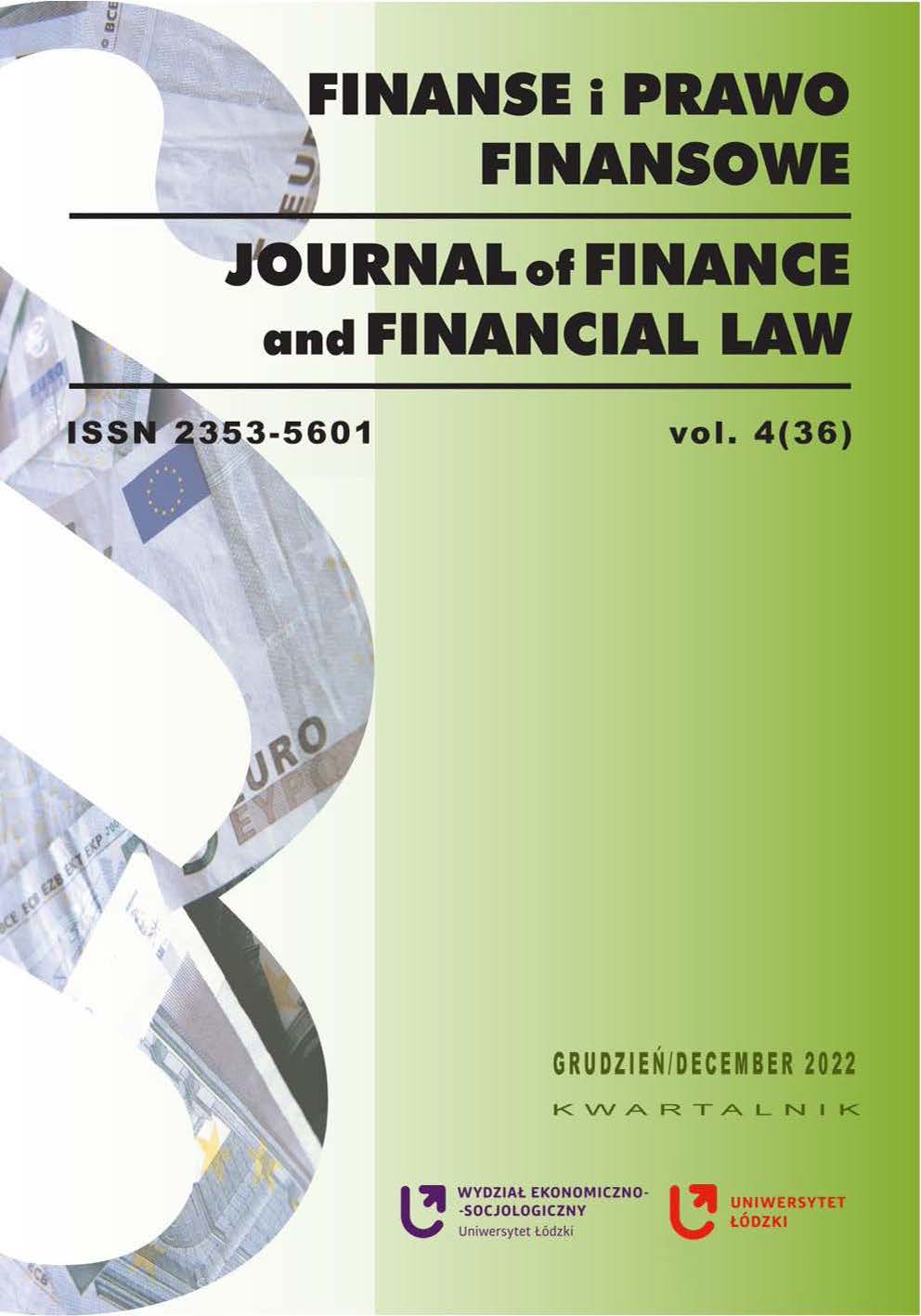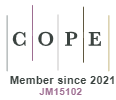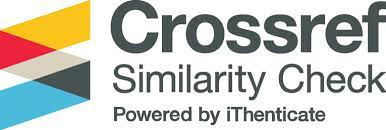Unethical Advertising Practices in the Financial Market and Counteraction Tools
DOI:
https://doi.org/10.18778/2391-6478.4.36.03Keywords:
financial advertising, financial consumer protection, advertising restrictions, small-dollar loans, advertising good practicesAbstract
The purpose of the article/hypothesis. Paper highlights certain crucial aspects of misleading and deceitful advertisings of banking and financial products and services, its effects, and the necessity to ban and/or restrict some of professionals’ misbehaviours. Many research evidence shown how an endless amount of information and specific advertisements can influence consumers’ financial decision-making. This concern was intensified by the impact of COVID-19 on the financial situation of many households.
Methodology. Author has conducted extensive research using national and international literature, public reports, legal cases, administrative proceedings, national and international legislations. There are presented some national examples, good principles and suggestions of what should be done to better protect the customers on the banking and financial market.
Results of the research. The study revealed that the misleading, abusive conducts and numerous sales strategies of professionals operating on the markets at issue may regard almost any individual. Unethical advertising practices may intensify because of ever-increasing technology and new advertising techniques. As described, both the type and the timing of the advertising can also greatly influence consumers’ choice. The policy makers shall be determined, decisive and fast in order to assure that financial products and services are safe and law-compliant, to raise standards in advertising sector, to prevent defaults, irresponsible borrowing, loss of privacy, discrimination, failures and predatory practices. The measures shall prevent the frauds and the marketing and sales strategies of a set of unrealizable promises or products unsuited to the needs of customers on the financial advertising market.
Downloads
References
Akerlof, G.A. (1970). The Market for ‘Lemons’: Quality Uncertainty and the Market Mechanism. Quarterly Journal of Economics, 84.
Google Scholar
DOI: https://doi.org/10.2307/1879431
Akerlof, G.A. and Shiller, R. (2015). Phishing for Phools. The Economics of Manipulation and Deception. Princeton: Princeton University Press.
Google Scholar
DOI: https://doi.org/10.2307/j.ctvc777w8
Anderson, S.P. (2005). Regulation of television advertising. https://core.ac.uk/download/pdf/7191685.pdf [Accessed 20.01.2022].
Google Scholar
Attas, D. (1999). What’s wrong with “Deceptive” Advertising. Journal of Business Ethics, 21.
Google Scholar
DOI: https://doi.org/10.1023/A:1005985723779
Banco de Espana (2018). The Advertising Activities of banking products and services of the entities supervised by Banco de Espana. https://www.bde.es/f/webbde/Secciones/Publicaciones/PublicacionesAnuales/MemoriaServicioReclamaciones/17/The_advertising_activity_of_banking_products_and_services_of_the_entitie.pdf [Accessed 10.01.2022].
Google Scholar
Bulgarea, C.N. (2010). Distribution of Banking Products and Services. Annals of Faculty of Economic, 1(2).
Google Scholar
Bureau European des Unions de Consommateurs – BEUC (2018). Automated Decision Making and Artificial Intelligence – A consumer perspective. BEUC Position Paper.
Google Scholar
Bureau European des Unions de Consommateurs – BEUC (2010). Online Advertising – Impact on Consumers. BEUC Reflection Paper.
Google Scholar
Department for Business, Innovation and Skills – BIS (2013). Making Consumer Credit Markets Fair. Payday lending advertising research conducted for BIS by Ipso MORI Social Research Institute.
Google Scholar
European Parliamentary Research Services – EPRS (2015). Online consumer reviews. The case of misleading and fake reviews, PE 571.301.
Google Scholar
Financial Services Consumer Panel (2020). Discussion Paper on Digital Advertising in Financial Services. https://www.fs-cp.org.uk/sites/default/files/fscp_final_digital_advertising_discussion_paper_20200630.pdf [Accessed 25.07.2022].
Google Scholar
Financial Services User Group – FSUG (2019). Responsible consumer credit lending. FSUG opin-ion and recommendations for the review of the Consumer Credit Directive. https://ec.eu-ropa.eu/info/sites/info/files/business_economy_euro/banking_and_finance/documents/fsug-opinions-190408-responsible-consumer-credit-lending_en.pdf [Accessed 10.03.2022].
Google Scholar
Fuchs, C. (2018). The Online Advertising Tax as the Foundation of a Public Services Internet: A CAMRI Extended Policy Report. London: University of Westminster Press.
Google Scholar
DOI: https://doi.org/10.16997/book23
Legislative Decree of 24 February 1998, No. 58 “Testo Unico della Finanza (TUF)”.
Google Scholar
Lindholm, O. (2008). The Influence of Sales Promotion on Consumer Behavior in Financial Services (Master’s Thesis). Helsinki: Helsinki School of Economics.
Google Scholar
MacBride, S. (1980). Many Voices, One World: Communication and Society, Today and Tomorrow. New York: Unipub (UNESCO).
Google Scholar
Mazur, Z.M. (2021). Where is the limit of Misselling. The International Review of Financial Consumers, 6(1).
Google Scholar
Mazur, Z.M. (2022a). Sulla tutela del consumatore volutamente disinformato. A proposito dell’ordinanza della Corte (Settima Sezione) in causa C-198/20 del 10.06.2021. Rivista di diritto dell’impresa (forthcoming).
Google Scholar
Mazur, Z.M. (2022b). The Consumer Lending Protection. How to prevent the predatory lending and “debt slavery” on the small-dollar lending market during and after the COVID-19 emergency. (manuscript submitted for publication).
Google Scholar
DOI: https://doi.org/10.18778/2391-6478.4.36.05
Miller, Jr. T.W. (2019). How do small-dollar, nonbank loans work? Arlington, Virginia: The Mercatus Center at George Mason University.
Google Scholar
DOI: https://doi.org/10.2139/ssrn.3381211
Nagler, M.G. (1993). Rather bait than switch. Deceptive advertising with bounded consumer rationality. Journal of Public Economics, 51. https://doi.org/10.1016/0047-2727(93)90071-Z
Google Scholar
DOI: https://doi.org/10.1016/0047-2727(93)90071-Z
Nair, D. (2020). Affective Priming Technique in Advertising – An Empirical Study With Reference to Fast Moving Consumer Goods Sector. Academy of Marketing Studies, 24(3).
Google Scholar
Nelson, J. (2004). Advertising Bands US. EH.Net Encyclopedia, https://eh.net/encyclopedia/nelson-adbans/ [Accessed 25.07.2021].
Google Scholar
Ofcom (2020). The Communication Market Report 2020. https://www.ofcom.org.uk/__data/assets/pdf_file/0026/203759/cmr-2020.pdf [Accessed 12.03.2022].
Google Scholar
Pollay, R.W. (1986). The Distorted Mirror: Reflections on the Unintended Consequences of Advertising. Journal of Marketing, 50(2). https://doi.org/10.2307/1251597
Google Scholar
DOI: https://doi.org/10.2307/1251597
REFIT Platform Opinion on the submission by 5 organisations on the consumer Credit Directive 2008/58/EC. https://ec.europa.eu/info/sites/default/files/vi4afccd.pdf
Google Scholar
Regulatory Guide 234. https://static1.squarespace.com/static/52b5f387e4b08c16746b6b70/t/59d87b77e45a7c0ce23b1222/1507359611940/rg234-published-27-september-2017.pdf [Accessed 09.04.2021].
Google Scholar
Restrictions on use of terms. https://www.handbook.fca.org.uk/handbook/MCOB/3A/2.html [Accessed 29.03.2021].
Google Scholar
Schrank, J. (1977). Snap, Crackle, and Popular Taste: The illusion of Free Choice in America. New York, Delacorte: Dell Pub. Co.
Google Scholar
Simon, H.A. (1957). Models of man. New York: John Wiley.
Google Scholar
DOI: https://doi.org/10.2307/2550441
Taha, A.E. and Petrocelli, J.V. (2020). Advertising Options. Tulsa Law Review, 56(1).
Google Scholar
Weinstein, N.D. (1980). Unrealistic optimism about future life events. Journal of Personality and Social Psychology, 39(5). http://dx.doi.org/10.1037/0022-3514.39.5.806
Google Scholar
DOI: https://doi.org/10.1037/0022-3514.39.5.806
(www1) https://www.uokik.gov.pl/news.php?news_id=16999 [Accessed: 06.10.2021].
Google Scholar
(www2) https://www.wsj.com/articles/how-payday-lenders-target-consumers-hurt-by-coronavirus-11591176601 [Accessed 20.10.2021].
Google Scholar
(www3) https://uokik.gov.pl/aktualnosci.php?news_id=18764 [Accessed 03.11.2022].
Google Scholar
(www4) https://uokik.gov.pl/news.php?news_id=18786&news_page=3 [Accessed 03.11.2022].
Google Scholar
(www5) https://www.asa.org.uk/uploads/assets/uploaded/5b773c7e-0e04-41bd-b09b30a440d44fd4.pdf [Accessed 20.10.2021].
Google Scholar
(www6) https://www.ofcom.org.uk
Google Scholar
(www7) https://www.asa.org.uk/uploads/assets/7f8b2737-2876-489f-a553f655c4fd8f07/BCAP-Code-14-Finance.pdf
Google Scholar
(www8) https://cdn.asa.co.nz/wp-content/uploads/2021/11/Financial-Advertising-Code-November-2021.pdf [Accessed 03.11.2022].
Google Scholar
(www9) https://support.google.com/adspolicy/answer/2464998?hl=en&ref_topic=1626336
Google Scholar
(www10) https://about.ads.microsoft.com/en-us/resources/policies/financial-products-and-services-policies [Accessed 08.08.2022]
Google Scholar
(www11) https://www.facebook.com/policies/ads/prohibited_content/prohibited_financial_products_and_services [Accessed 08.08.2022].
Google Scholar
(www12) https://it.linkedin.com/legal/ads-policy [Accessed 08.08.2022].
Google Scholar
(www13) https://searchengineland.com/payday-loan-ads-still-showing-google-ban-258945 [Accessed 20.10.2021].
Google Scholar
(www14) https://www.ccpc.ie/consumers/shopping/misleading-advertising/ [Accessed 03.11.2022].
Google Scholar
(www15) https://www.afm.nl/en/nieuws/2009/feb/waarschuwingszin [Accessed 03.11.2022].
Google Scholar
(www16) https://www.asa.org.uk/news/asa-welcomes-sentencing-of-criminals-behind-fraudulent-copycat-websites.html [Accessed 08.09.2021].
Google Scholar
(www17) https://en.agcm.it/en/media/press-releases/2020/10/A542 [Accessed 12.09.2021].
Google Scholar
(www18) https://www.knf.gov.pl/dla_konsumenta/ostrzezenia_zagranicznych_organow_nadzoru [Accessed 10.12.2021].
Google Scholar
(www19) https://www.knf.gov.pl/en/CONSUMERS/Information_for_the_financial_market_consumers/Public_warnings [Accessed 10.12.2021].
Google Scholar
(www20) https://www.uokik.gov.pl/news.php?news_id=16629
Google Scholar
Downloads
Published
How to Cite
Issue
Section
License

This work is licensed under a Creative Commons Attribution-NonCommercial-NoDerivatives 4.0 International License.














